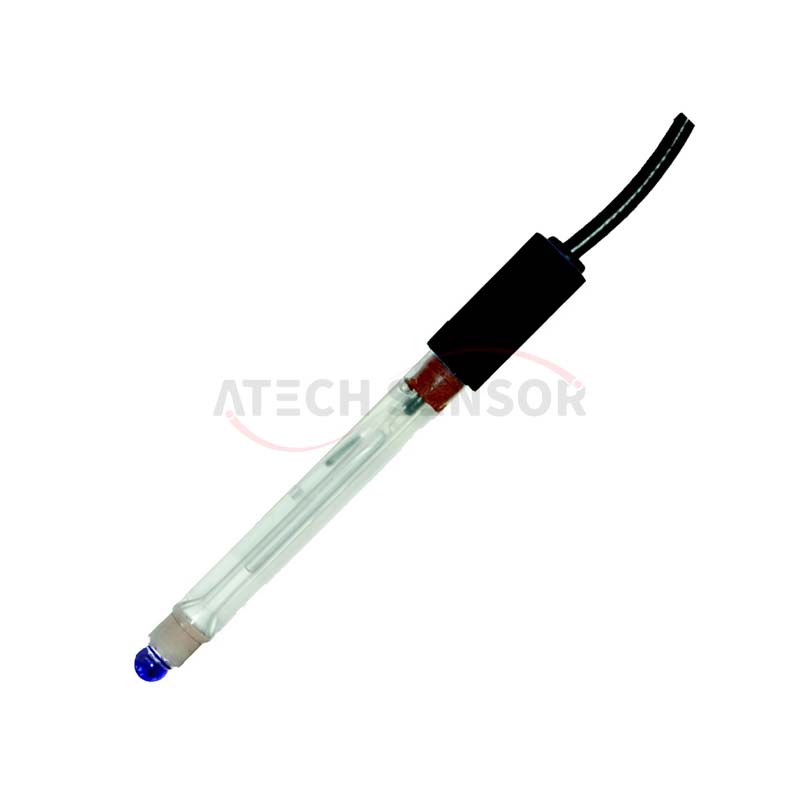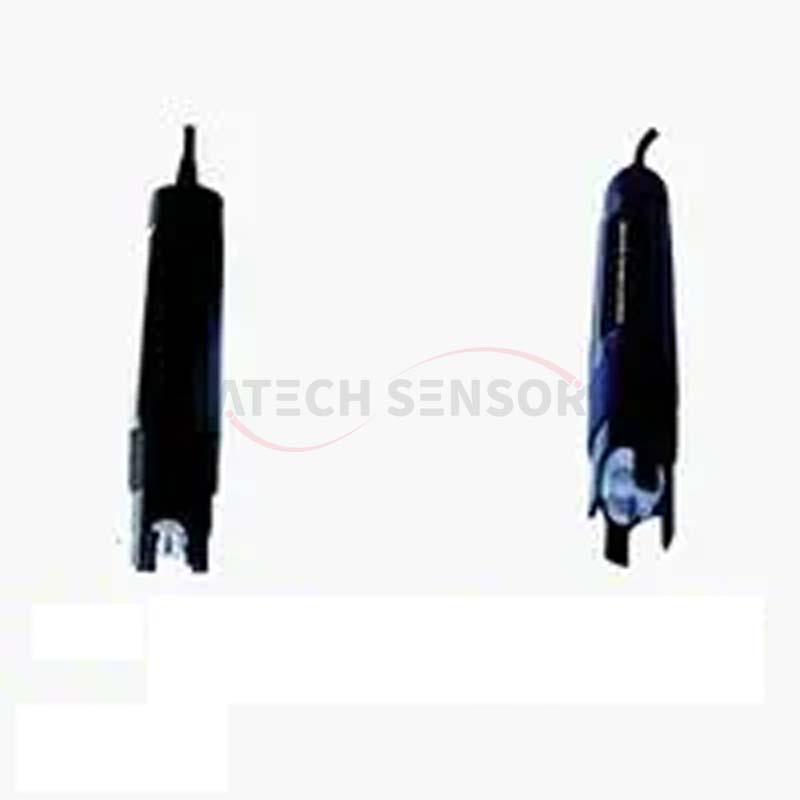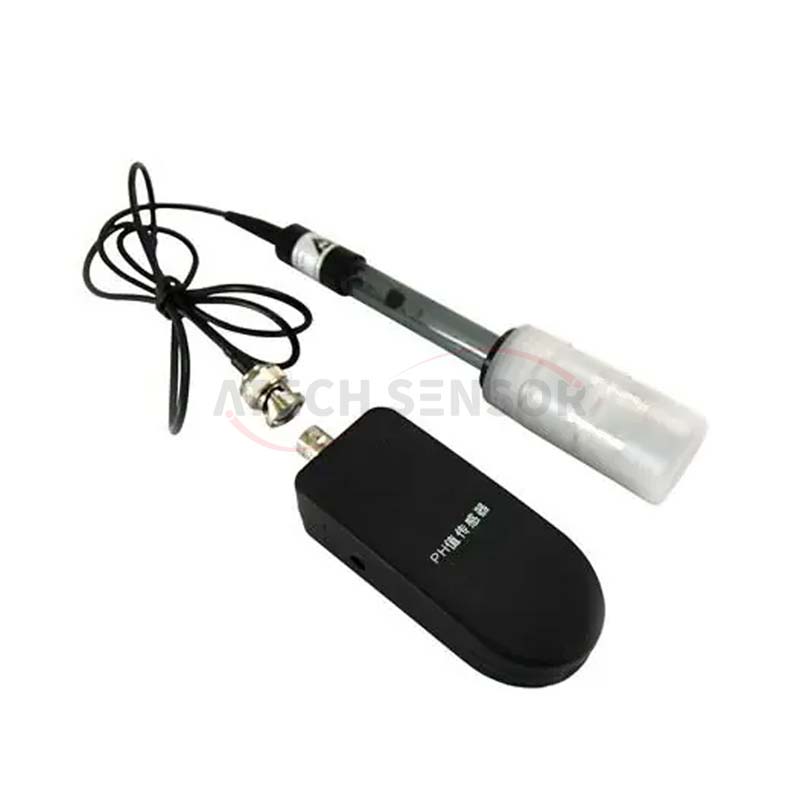pH sensor is a sensor used to detect the hydrogen ion concentration in the object being measured and convert it into a corresponding usable output signal.

Product Introduction
Definition
pH sensors are usually composed of a chemical part and a signal transmission part. pH sensors are often used for industrial measurements of solutions, water and other substances.
Features
1. Quick cable connector, waterproof function, avoid cable twisting during installation;
2. Long life, good performance in toxic ion aqueous solution;
3. Multiple installation methods, easy to assemble;
4. Strong resistance to chemical corrosion, overall sealing, eliminating leakage.
Applications
The pH sensor can measure the pH value in large reaction tanks or process pipelines; it is resistant to high temperature sterilization and CIP cleaning; the electrode length is available in 120, 150, 220, 250, 450 mm and other options. Bell's T255/T335PH sensor is used for pH value measurement in various occasions, such as: pH value measurement in wastewater, pH value measurement in electroplating wastewater, pH value measurement in high temperature, pH value measurement in fermentation, pH value measurement in high pressure, etc.
Cleaning and maintenance
1. Avoid leaving the electrode dry. When the electrode is not in use, rinse it with water and insert it back into the liquid sleeve with 3molKcl, or insert the electrode into a container with 3molKcl.
2. Check whether the joint is dry and clean. If it is contaminated, wipe it with anhydrous alcohol and blow it dry before use.
3. The pH electrode should be cleaned regularly. If the electrode glass bulb and the polytetrafluoroethylene annular liquid interface are contaminated, the following reagents can be used for cleaning:
① Grease or oily substances can be cleaned with surfactants.
② Calcium precipitates or metal hydroxides can be cleaned with 10% dilute hydrochloric acid.
③ Sulfide precipitates can be cleaned with 10% dilute hydrochloric acid.
④ Protein attachments can be cleaned with a mixture of 10% dilute hydrochloric acid and pepsin.
4. The surface of the ORP electrode should be bright. Rough or contaminated surfaces will affect the potential of the electrode. The following methods can be used for cleaning and activation:
1) For inorganic pollution, the electrode can be immersed in 0.1mol/L dilute hydrochloric acid for 30 minutes, washed with pure water, and then immersed in 3.5mol/L potassium chloride solution for 6 hours before use.
2) For organic oil and oil film pollution, the platinum surface can be cleaned with detergent and then washed with pure water, and then immersed in 3.5mol/L potassium chloride solution for 6 hours before use.
3) The platinum surface is seriously polluted to form an oxide film. The platinum surface can be polished with toothpaste, then washed with pure water, and then immersed in 3.5mol/L potassium chloride solution for 6 hours before use.
Instructions for use
When in use, the pH sensor is usually first covered with a stainless steel protective sleeve and then inserted into the fermenter. Most pH sensors have a temperature compensation system. Since the contents of the electrode will change over time or high-temperature sterilization, calibration is required before each batch of fermentation sterilization operations, that is, calibration with a standard pH buffer. Usually the measurement range of the pH sensor is 0-14, the accuracy is ±(0.05-0.1), the response time is from a few seconds to tens of seconds, and the sensitivity is 0.1.

⑴Calibration. The sensor must be calibrated before use, which is the last step in sterilizing the fermenter. The sensor is calibrated outside the fermenter by immersing the pH electrode in an appropriate container containing one or more standard buffers for calibration. These operations are best performed at the operating temperature of the fermenter. The pH electrode needs to be connected to the pH meter used in the fermentation process, and the calibration device of the pH meter can be adjusted according to the conventional pH meter calibration steps. Since it is difficult or impossible to recalibrate during the fermentation process, it is best to fix the calibration control of the pH meter to avoid occasional offsets in the experiment. Many commercial instruments provide some fixing screws.
⑵ Sterilization. After calibration, the sensor should be inserted into the fermenter and sealed. When the fermenter is sterilized, the pH meter's connections are generally removed (when sterilized in an autoclave), reconnected after sterilization, and the pH sensor starts working. Some experimental operators also sterilize the pH sensor with alcohol alone (that is, without putting it in an autoclave), mainly to extend the service life of the sensor. The sensor should then be immediately inserted and sealed in the tank. It must be pointed out that this process may be contaminated. Although some reports say that this step is used regularly in research without problems. The specific method is as follows: Place the sensor, add a suitable accessory to make it easy to install the pH probe from the top plate of the fermenter, and then place it in anhydrous alcohol for at least 1 hour. The probe and accessories must be very clean, and the probe should be immersed higher than the accessories. Finally, the sensor should be quickly transferred to the pre-sterilized fermenter, which has been connected to the air supply system and the air has started to flow.
⑶ Calibration check. During sterilization or use, the calibration is likely to shift. For sensors in good condition, this shift will not exceed 0.2 units. However, some researchers still recommend calibrating or recalibrating after sterilization of the fermenter. Such systems are available for larger fermenters, where the sensor can be completely removed aseptically and partially inserted into the calibration buffer for calibration. At laboratory scale, it is necessary to completely remove the sensor and re-sterilize it using the chemical treatment methods described above. A good way to check a questionable calibration in the laboratory is to aseptically sample the fermentation broth and measure its pH outside the fermenter as soon as possible. Because cells are continuously metabolizing under changing conditions (such as oxygen and substrate consumption in continuous culture), if the buffering properties of the culture medium are poor, the pH can change significantly within a few minutes, making it impossible to properly check the calibration of the sensor.
Related Materials
Routine Maintenance
The probe needs to be filled or topped up with electrolyte from time to time, which is actually the electrolyte of the reference electrode, which slowly drains through the porous plug. Manufacturers provide special liquids for their sensors, but many experimenters prefer to make their own: concentrated or saturated KCl solutions, sometimes with certain solutes added to increase viscosity (usually when the sensor is autoclaved in situ). In theory, the electrolyte level should be kept high enough so that its static pressure exceeds that of the fermentation broth, so that the flow through the porous plug tends to flow from the sensor to the fermentation broth, but in practice this is often difficult to achieve. Although the electrolyte level is higher than the fermentation broth, the headspace pressure of the vented fermenter is generally slightly above atmospheric pressure, which is caused by the outlet gas filter and the resistance of the outlet pipe. The headspace pressure of the electrolyte chamber of the probe is usually atmospheric pressure during operation. A pressure difference of 103Pa requires a probe head height of 10cm, which is probably the maximum in practice, and this is also partly responsible for the fouling of the porous plug. If the pH probe has a sealed outer jacket, it may be helpful to maintain a positive gauge pressure during fermentation.
Problems in use
During actual use, pH sensors may have the following problems: decreased sensitivity/slope, slow response, noise signals, and chemical damage.
⑴ Sensitivity/Slope: There is a theoretical relationship between pH and the electrode potential of the probe (see the Nernst equation above). A new pH probe can approach its theoretical slope (i.e., the electrode potential is 59mv per pH unit at 25°C), but as the probe ages or breaks, the sensitivity will continue to decline. Most pH meters or amplifiers can control and change the sensitivity of converting voltage signals into pH readings (usually marked as slope or sensitivity), which can be calibrated by mv or temperature (because temperature is the only factor that theoretically affects the slope). It is worth noting that this is different from "buffer setting" or "zero control". After the system is subjected to some pH calibration (controlled by buffer setting), it is tested with one or more buffers. Contrary to the expected results, the pH meter readings will systematically deviate from the pH value of the known buffer. . If the resulting line is steep, it means that the slope is set too low; if the resulting line is flat, it means that the slope is set too high.
⑵ Cleaning: When the pH probe shows a delayed response or decreased sensitivity, it needs to be cleaned. The main reason for the deterioration of pH probes is that substances in the fermentation broth contaminate the porous plug. If the porous plug is contaminated, it will turn from white to brown or black. To prevent contamination, the pH probe can be immersed in a 10mmol/L HCl solution, which will not damage the pH sensor (this can also be used to routinely store the pH probe during intermittent operation). Sometimes adding pepsin helps to remove protein precipitation. If HCl treatment is ineffective, you can try the following two methods, although they have a certain risk of damaging the pH probe, but they also have a certain effect. Soak the pH probe in a 1% H2O2 solution for about 1 to 2 hours; or perform a gentle mechanical cleaning on the porous plug, that is, use a sharp blade to scrape off the deposits on the outer surface.
⑶ Electrical interference: The high impedance and amplifier circuits of the pH meter may cause some problems, which makes the pH probe sensitive to noise caused by the induced voltage of the stray field entrance of other electrical equipment, and is also sensitive to erroneous responses caused by the slight current leakage between the two terminals carrying the pH probe signal. For this reason, the manufacturer of the pH sensor or pH meter provides dedicated shielded wires and terminals. If there is excessive noise, the pH probe wire can be moved away from other wires to reduce noise. The agitator motor may be a source of interference, which can be checked by turning the motor off for a few seconds. The spikes on the pH trace correspond to the opening or closing of the heater circuit (the switch can be observed by a light or judged by the sound of the relay switching of the heater control unit). Noise or inaccurate readings after autoclaving can reflect contamination of the terminal and wires caused by condensation of steam during the sterilization process.
⑷Prevent mechanical damage: The pH probe is quite fragile and is easily damaged during the installation and cleaning of the fermenter. It is therefore recommended to insert the pH probe at a later stage of the fermenter preparation (calibration is required here) and remove the pH probe before disassembly after use (tank removal). Many cases of sensor damage are caused by lifting the top cover of the fermenter without removing the sensor. To avoid damage to the probe when it is stored during intermittent operation, a simple method is to place the sensor in a plastic measuring cylinder filled with a special solution. Choose a suitable measuring cylinder size so that the wider part of the probe can be inserted and the spherical detection part is suspended above the bottom (for example, a cotton can be inserted into the bottom of the measuring cylinder), and it is best to fix the measuring cylinder with a clamp.

